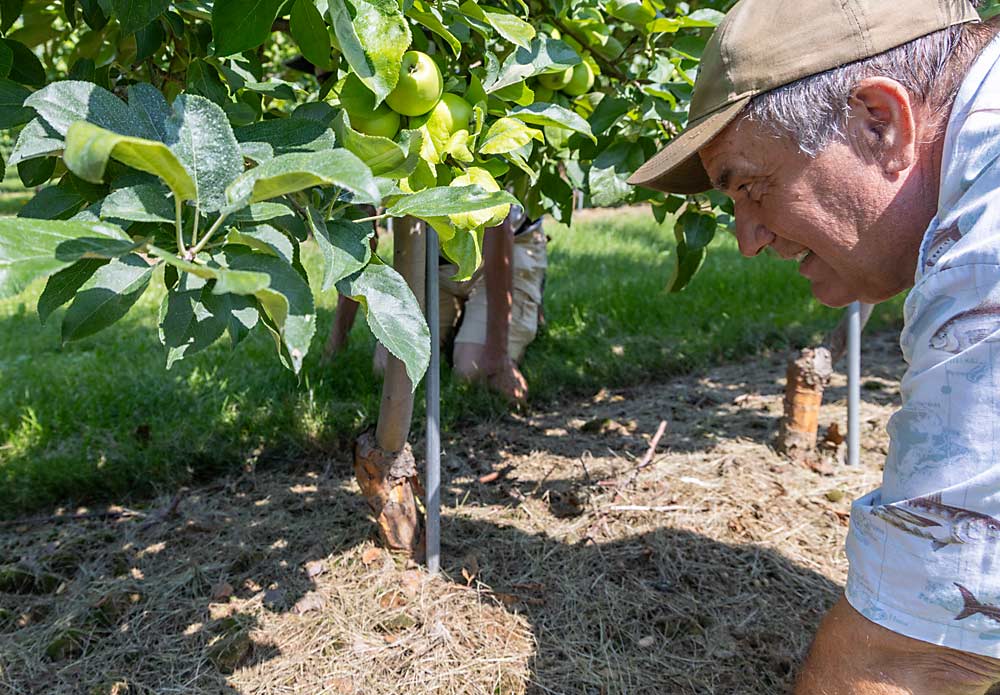
Last spring, Massachusetts grower Mo Tougas noticed unusual damage in one of his apple blocks, Honeycrisp on various rootstocks. He found cracked and peeling bark on most of the rootstock shanks, with some of them completely girdled.
It reminded him of classic southwest winter injury, but the damage he was seeing wasn’t limited to the southwest side of the trees.
Tougas started seeing similar damage in other high-density blocks, regardless of the variety, rootstock (as long as it was more dwarfing than Malling 26) or age of the tree. The frequency of the damage varied. In some rows, every tree looked hit; in others, they seemed fine. He sent leaf samples from damaged trees to a lab for analysis, where they were found to be badly deficient in nutrients. He heard from other growers in the Northeast who found similar damage in their orchards, at varying rates.
The more Tougas learned, the more alarmed he grew. The damage he was seeing couldn’t readily be ascribed to the usual culprits — pathogens, pests or injury from herbicides, drought or flooding. At best, it was a major tree-health challenge that would require a lot of labor and rehabilitation. At worst, he feared it was the first sign of a large-scale tree collapse.
In interviews with Good Fruit Grower, no one could say for sure why bark is peeling away from apple trees in the Northeast, or how widespread the damage might be.
The leading theory is winter injury caused by a “false spring” that caused tree shanks — the aboveground portion of the rootstock — to come out of dormancy, making them susceptible to cold damage, said Jon Clements, University of Massachusetts Extension tree fruit specialist. In Massachusetts, January 2023 was the warmest on record, followed by a record cold snap in early February. A May freeze killed or damaged a lot of fruitlets post-bloom, and a dry spell followed by deluges stressed orchards throughout the summer.
Penn State University tree fruit pathologist Kari Peter said the damage is probably caused by a “hodgepodge of things,” including winter injury, pathogens and pests. But if the rootstock shank is damaged, the cause is not rapid apple decline, which she has been studying since the collapse phenomenon was first reported a decade ago. RAD damage starts at the graft union and works its way up the tree, and RAD is exclusive to trees on M.9 and its clones.
Clements said that by late summer 2023, tree decline was observed as off-color foliage and weak shoot growth in several high-density apple blocks in New England. Closer inspection often revealed wholesale sloughing off of the bark on exposed rootstock shanks down to the cambial layer, either wholly or partially girdling the tree. The resulting decline symptoms will lead to tree death or loss of productivity. M.9 clones and several Geneva rootstocks are showing damage, but factors such as site, variety and tree age don’t show a consistent pattern. Shank cracking has been observed in the past, but not at such alarming levels, he added.
Jason Londo, Cornell University associate professor of fruit crop physiology, started hearing about tree decline when he joined Cornell in 2022. In New York, he saw discolored leaves and dead bark tissue sloughing off rootstock shanks in high-density blocks. Where the dead bark was still on the tree, there was often moisture, slugs and fungi underneath.
The damage was distinct, he said. The graft unions were fine. The scions were alive. The damage was on the shanks, the only part of the rootstock not insulated from cold temperatures. It looked a lot like cold injury, with pathogen and insect pests aggravating the injured areas. The damage wasn’t limited to a single rootstock, and it wasn’t showing in high-density trees older than 15 years, Londo said.
This signature damage has only been found in high-density plantings, where root competition is intense and canopies are pushed for maximum production. Dwarfing trees are already under a lot of pressure, and extra stress can tip them into decline, Londo said.
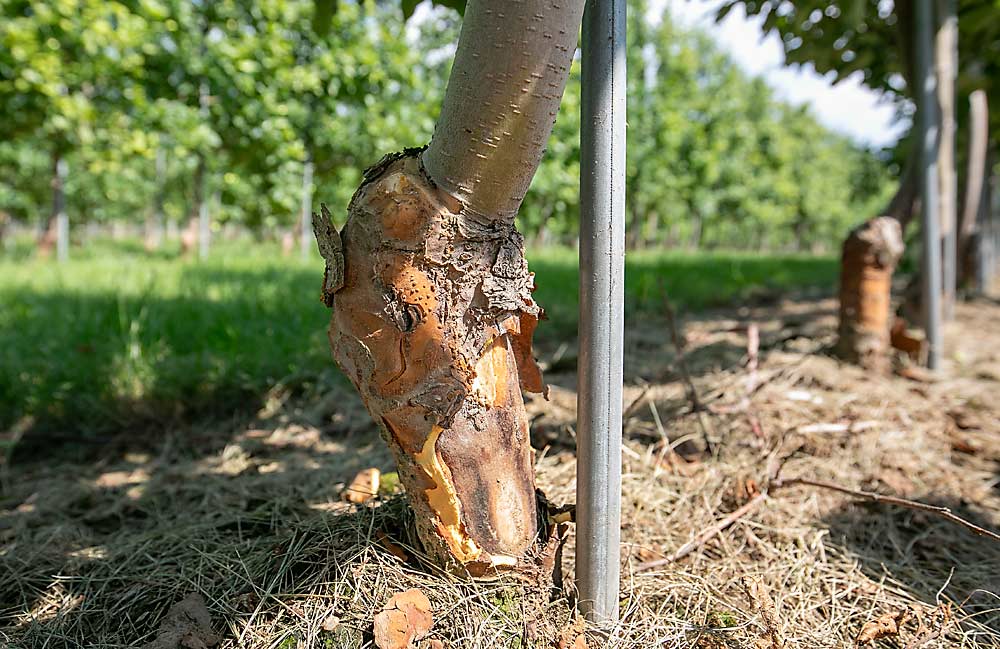
But there’s so much more about this phenomenon that needs to be uncovered. Is the damage new or the result of years of stress that’s just now showing? Should growers be ripping out damaged blocks? Which rootstocks should they avoid? And how big of a problem is this, really?
Londo wants to start by surveying growers, asking them how much decline they’re seeing, as well as the rootstock, scion and age of the trees they’re seeing it in.
He also wants to study rootstock resistance to losing cold tolerance during periods of midwinter warming. Such a study would help researchers develop planting recommendations for growers in today’s less-predictable winters. His lab has started freezing rootstocks and whole trees at different temperatures to find out which temperatures cause lethal damage.
“There’s a huge gap in our knowledge,” he said. “We’re not even sure how many resources we need to throw at it.”
At this point, Clements, the UMass extension specialist, can only give suggestions for best management practices: Plant only on the best sites (avoid wet feet); plant trees deeper, minimizing exposed rootstock portions; paint trunks and shanks white all the way to the ground; avoid overfertilizing with nitrogen; and apply herbicides cautiously or protect trunks from herbicide spray.
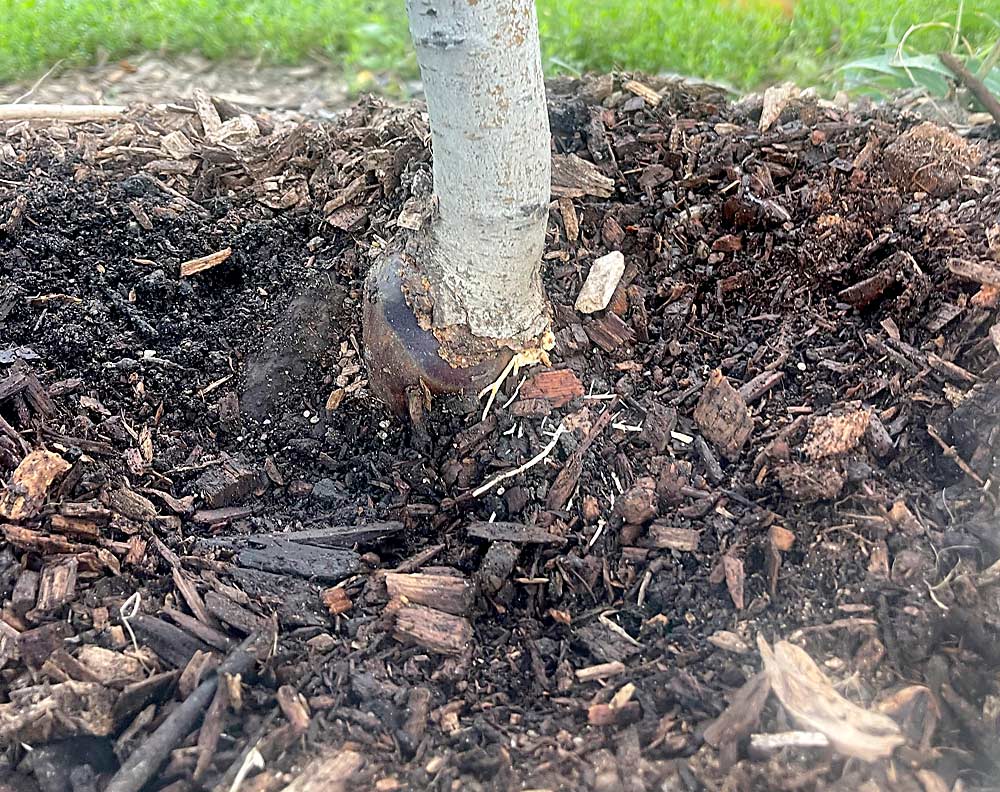
By late December, the tree collapse Tougas feared hadn’t occurred at his family orchard, but he was still worried about his trees’ long-term prospects. His 25 acres of U-pick apple trees had enough stored reserves to produce a decent crop in the fall, and record rains ensured the trees weren’t water stressed. But many of them are completely girdled around the shank, and he would not be surprised if they collapse in the spring.
In the short term, Tougas is painting trunks, treating injured areas with fungicide and making higher mounds of compost and wood chips around the shanks — to induce rooting.
“We are seeing rooting,” he said. “Some on the scion, which we will need to manage but with luck will give us time to make new plantings to replace damaged rows. We’re also seeing roots from parts of rootstock that survived.”
—by Matt Milkovich

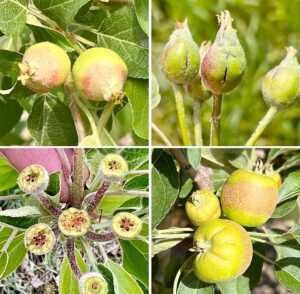
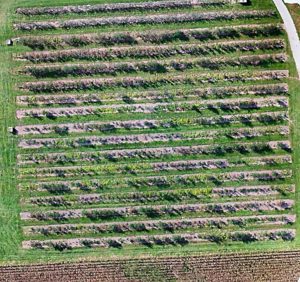





The symptom show like botryosphaeria
noticed it on my a couple dozen of my trees some have completely girdled